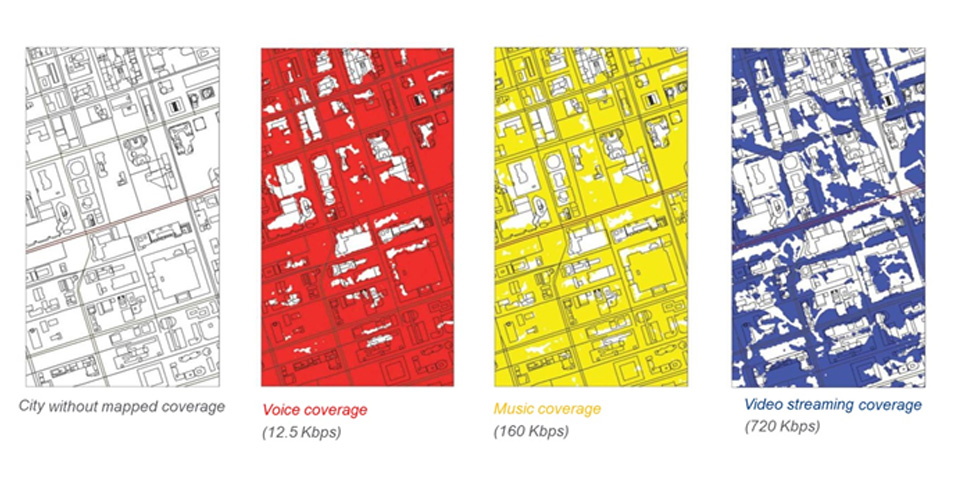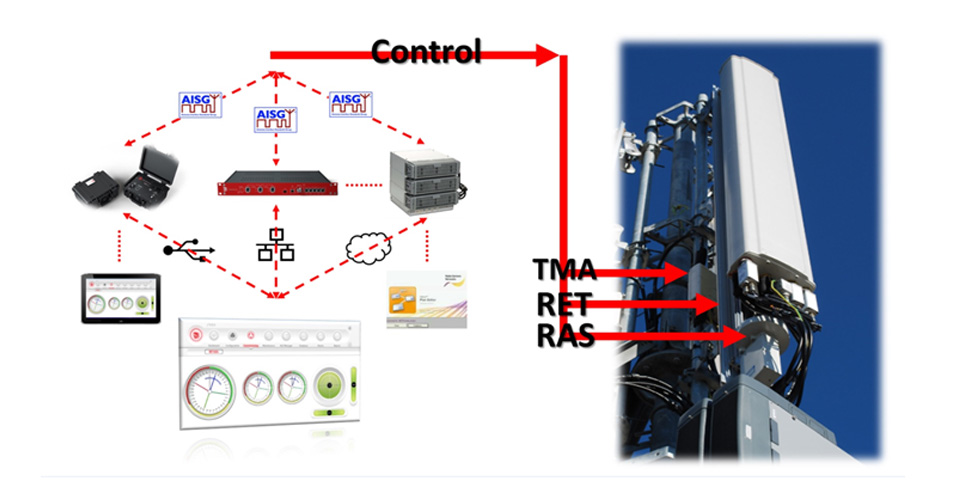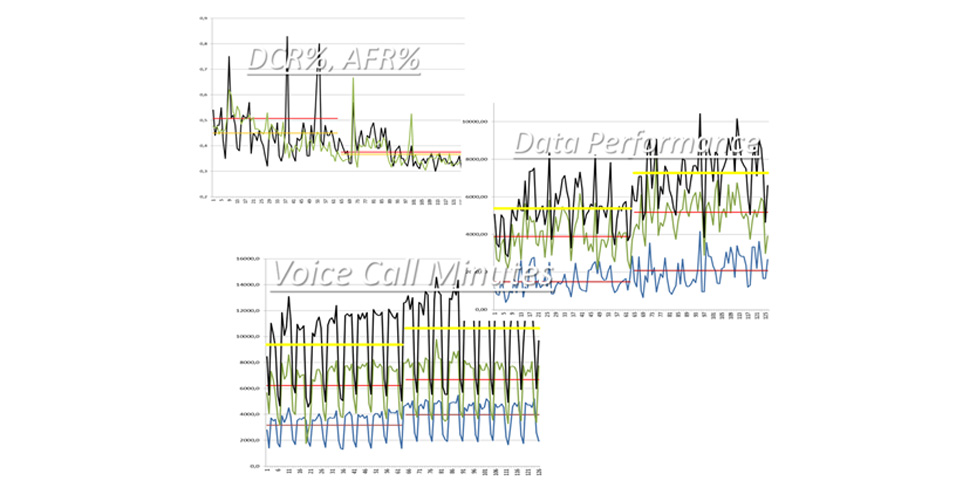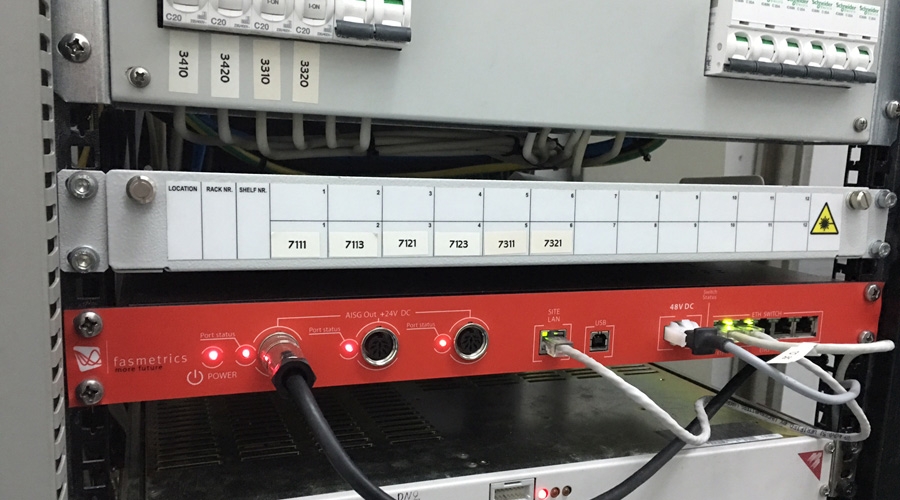Due to the rapidly growing number of smart devices and apps, delivering one gigabyte per user per day, while at the same time keeping voice drop call and access failure rates at less than 0.5% network wide, is not an easy task to be achieved. It is a fact that the demands of mobile users on network resources is continuously increasing. As devices become more powerful and consume more data, greater network capacity is needed to satisfy end user experience. It is well known that video streaming – one of the most demanding app in terms of data bit consumption – will soon account for just over half of all mobile traffic in a typical network.

Is your network well optimized for dealing with the massive amount of data capacity required for video streaming?
Radio access technology and available transmitting frequencies are the two primary factors to determine your network’s service level capability. However, operators with an ambition of meeting or exceeding user expectations will have to track coverage for apps and devices on a continual basis to keep up with the service level they require.
The most efficient way to achieve this is by “actively” covering the capacity demand when this arises.
We know that “active” coverage planning requires the deployment of some antenna intelligence. That is why we have researched and developed our own antenna intelligence system in order to specifically address this issue! Antennas are passive network elements deployed in every radio network. Any antenna intelligence available today is clearly separated from the use of its dipoles although all are integrated as complete products for specific antenna solutions. Our antenna intelligence is different: it is directly applied at the antenna mountings. It also focuses on azimuth steering, specifically on automated remote electrical azimuth steering.
We automatically fine-tune the antenna directionality in the azimuth plane, to track the best network coverage for apps and devices.
Our system has been designed with a single purpose in mind: All connected devices in the mobile network should have the service quality they require, no matter where and when they need it. We have successfully developed the “hardware” to implement the automated remote electrical azimuth steering function in an antenna system. We have successfully developed the “interfaces” to autonomously control the antenna azimuth setting in real-time. We have successfully developed the “mindset” to decide the optimum antenna azimuth heading for app and device coverage tracking. And we know that you are in a continuous need to increase your revenues and profitability.
Radio planning parameters used by network operators to install base stations and decide their coverage are often depended on the use of simulation tools. Such tools mainly offer the network’s coverage based on the geographical properties of the area. As such, these tools cannot predict the radio planning parameters according to the actual network usage. This initial radio planning adoption by network operators can cause severe under-performance as it primarily aims at geo coverage KPI’s and not the usage equivalents.
It is well known that the distribution of mobile users in a mobile network is random and uncertain. The users can be unevenly geo-located in a coverage area.
This uneven geo-distribution of network usage in time and location is the real problem to be tackled. The quality of the radio links formed between the mobile users and the radio base stations (as this is interpreted by signal power and/or interference and noise levels) is what actually defines the offered service KPI’s. As such, the fact that in some occasions the majority of mobile users may be served at the cell-edge it clearly impacts the service quality (due to the network stress when it is operating at its physical limits).
Our antenna intelligence system is invented to cope with this random and uncertain user geo-distribution in the network.
To solve the problem, we compare real-time data directly collected by the mobile devices connected to the network and indicate the service level KPI’s at different azimuth headings. Our sophisticated algorithms, after experimenting with various azimuth patterns within pre-defined timeframes, choose the best performing headings in time in order to optimize the cell-edge traffic when it is generated.
Our innovative antenna mountings introduce a new solution that allows the autonomous positioning and steering of any antenna system in the market. This new antenna mounting apparatus has been specifically designed to meet this challenge: it allows off the shelf antennas to be combined together to form an intelligent network which can automatically fine-tune the antenna directionality, thus to be capable to track the best network coverage for apps and devices in the service area.
It consists of a novel antenna mounting bracket to which existing antennas can be attached. The bracket can be fitted with combined steering and locking mechanism, which allow the antenna to steer in one plane whilst keeping all others firmly fixed. Such operation allows a highly accurate antenna positioning, while with the use of a locking feature, the installed antennas do not need to cope with back driving from wind loading.

The high positional 3-dimensional accuracy of the antenna brackets means that after establishing the relevant points of reference (tilt, roll and azimuth) any further re-positioning can be completely autonomously performed by utilizing the bracket’s internal motors and sensors. Mobile networks should be engaged on providing mobile (literally moving) users with the maximum network experience in any time and at any place.
Our revolutionary antenna mounting technology can be applied in any broadband radio network. It has been designed with an easy deployment process and a 3GPP standardized remote control operation via a Self-Organizing-Network antenna feature set. As an intelligent and automatic antenna control platform, it brings cutting-edge and market-capable advantages to your network.
Deployment in the field has demonstrated significant improvements in terms of network performance. OSS collected data has shown this by discovering system DCR’s and AFR’s reduced by over 20% during commercial operation, while at the same time voice call minutes and data bit consumption increased by over 40%.

Operators with the best performing networks can be capable of success in terms of growth, revenue and valuation. All connected devices and applications of end users in the mobile network should have the service quality they require, no matter where and when they need it. That is why it is critical to make it possible for automatically tuning the antenna coverage in a rapidly evolved wireless network.


